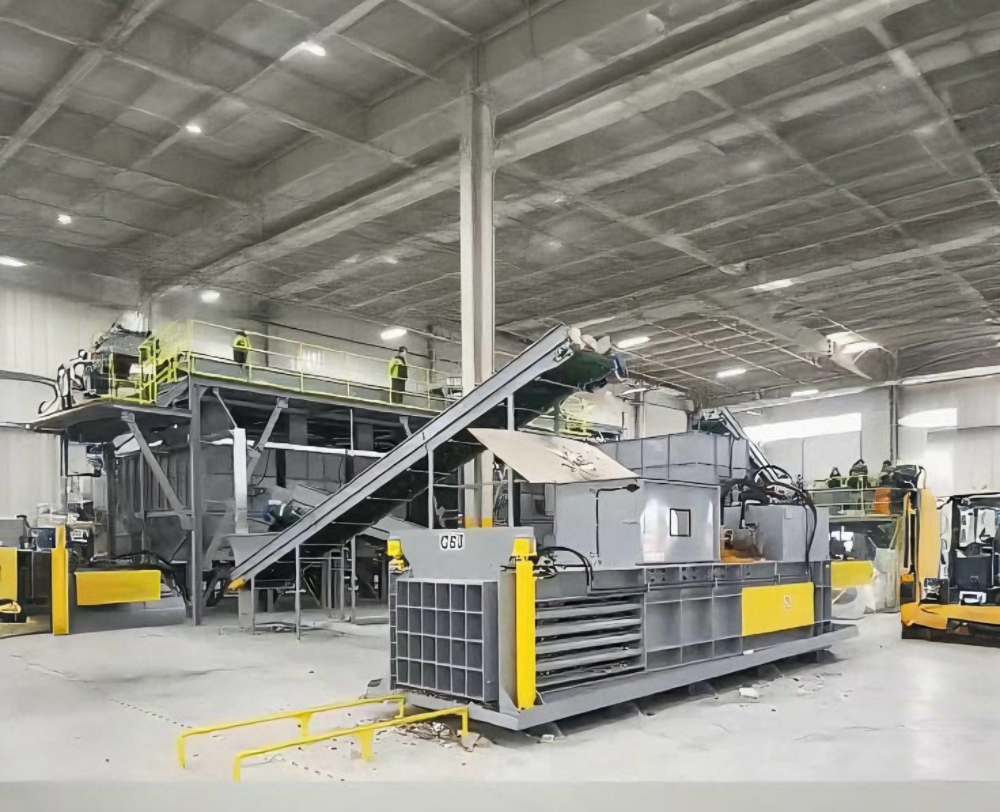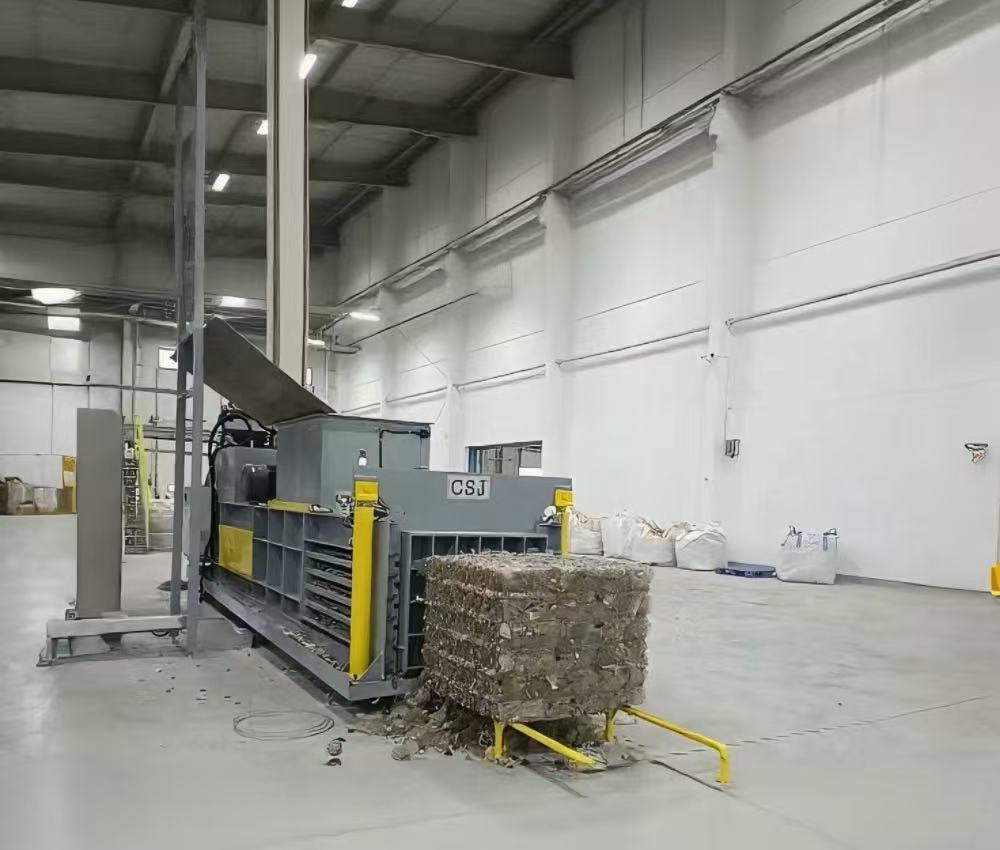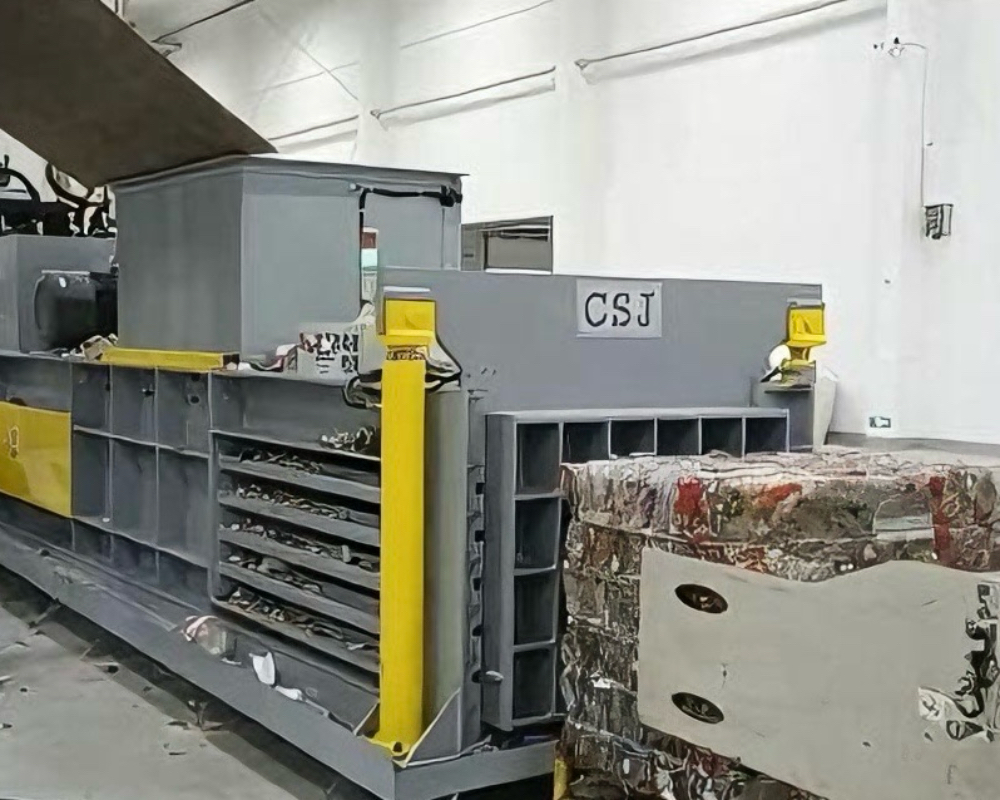In almost every industry, waste management is a challenge that cannot be ignored. Whether it’s cardboard boxes from retail stores, plastic film from logistics centers, or paper trimmings from printing companies, businesses generate a constant flow of recyclable waste. Without proper handling, these materials pile up quickly, consuming valuable space, increasing costs, and creating potential safety hazards.
The solution for many organizations is the horizontal baler—a machine that compresses recyclable materials into compact, manageable bales. By investing in a horizontal baler, companies can transform their waste from a burden into an opportunity.
In this article, we will explore in detail what a horizontal baler is, why it is important for businesses, and how to use it effectively. We will also look at practical examples of its applications across industries.
What Is a Horizontal Baler?

Key Features of a Horizontal Baler
-
Feeding Hopper – Where recyclable materials are loaded, either manually or by conveyor.
-
Compression Chamber – The compartment where hydraulic force compresses the material.
-
Hydraulic Ram – The powerful piston that applies pressure to reduce waste volume.
-
Binding System – Uses wires or straps to secure the bale once formed.
-
Ejection Mechanism – Pushes the finished bale out of the machine for storage or transport.
Horizontal balers are available in semi-automatic and fully automatic models:
-
Semi-Automatic Horizontal Balers: Operators need to tie the bales manually.
-
Fully Automatic Horizontal Balers: The machine automatically ties and ejects bales, reducing labor costs and boosting efficiency.
Why Should Businesses Use a Horizontal Baler?

There are many compelling reasons to invest in a horizontal baler. Below are some of the most important:
1. High-Volume Efficiency
Horizontal balers can handle continuous feeding and large-scale waste processing. They are ideal for supermarkets, warehouses, and recycling plants where large amounts of recyclable materials are generated daily.
2. Better Space Utilization
Loose cardboard, film, or paper takes up significant floor space. By baling these materials, companies can free up storage areas, maintain tidier work environments, and use space more productively.
3. Cost Savings on Waste Handling
Transportation costs rise when waste is collected in its loose form because it occupies more volume. Compact bales reduce hauling trips and optimize truckloads, directly lowering logistics expenses.
4. Increased Recycling Revenue
Recyclers often pay a higher price for baled materials than for loose waste because compacted bales are easier to transport and process. Businesses can generate additional income simply by baling their waste.
5. Environmental Responsibility
With growing awareness of environmental issues, many businesses aim to reduce landfill waste. A horizontal baler increases recycling rates, helping companies achieve sustainability goals and strengthen their corporate image.
6. Improved Workplace Safety
Unmanaged waste piles can create fire hazards, tripping risks, and blocked exits. Compacting waste into bales helps maintain a safer, more organized workplace.
7. Long-Term Investment Value
Although horizontal balers require upfront investment, the savings on labor, storage, and transportation, along with revenue from recyclables, ensure a strong return on investment over time.
How to Use a Horizontal Baler

Step 1: Prepare the Machine
-
Ensure the baler is installed on a stable surface.
-
Verify that it is connected to the proper power source.
-
Check hydraulic oil levels, safety interlocks, and the condition of binding wires or straps.
Step 2: Load the Material
-
Place recyclable materials into the hopper.
-
Feeding may be manual or automated with a conveyor, depending on the model and workflow.
-
Do not overload; follow the machine’s capacity guidelines.
Step 3: Start the Compaction Cycle
-
Activate the baler using the control panel.
-
The hydraulic ram pushes the waste against the chamber wall, compressing it into a smaller, denser form.
-
Continue feeding until the chamber reaches its full bale capacity.
Step 4: Tie the Bale
-
Semi-automatic models require the operator to thread, cut, and tie wires manually.
-
Fully automatic balers complete this step on their own, reducing labor time.
Step 5: Eject the Bale
-
The ejection mechanism pushes the finished bale out of the machine.
-
The bale can be stored neatly on pallets or directly transported for recycling.
Step 6: Perform Routine Maintenance
-
Clean the machine regularly to prevent buildup.
-
Inspect the hydraulic system, rams, and binding mechanism.
-
Replace worn-out wires, seals, or parts as necessary.
-
Follow the manufacturer’s service guidelines to maximize the baler’s lifespan.
Practical Example
To better understand how a horizontal baler works in practice, let’s look at a real-world scenario.
Imagine a large retail distribution center that receives thousands of products every week. Each product arrives in cardboard packaging, and after unpacking, the center is left with piles of empty boxes and plastic wrap. Without a baler, these materials take up enormous space and require frequent disposal runs.
By installing a horizontal baler, the distribution center can feed loose cardboard and plastic directly into the hopper throughout the day. The baler compresses the waste into dense, uniform bales, which are tied automatically and ejected onto pallets. These bales are stored neatly until a recycling company collects them.
The results are clear:
-
Floor space is freed up for operational use.
-
Labor hours once spent moving loose waste are minimized.
-
Fewer waste collection trips reduce transportation expenses.
-
The company earns revenue from selling compacted bales to recyclers.
This example shows how a horizontal baler not only solves a waste management problem but also adds measurable value to business operations.
Industries That Benefit from Horizontal Balers
While horizontal balers are versatile machines, they are especially valuable in certain sectors:
-
Recycling Facilities – For high-volume processing of cardboard, paper, plastics, and metals.
-
Logistics and Warehousing – To manage packaging waste from shipping and receiving goods.
-
Retail Chains & Supermarkets – For compacting cartons, packaging films, and other recyclables.
-
Manufacturing Plants – To handle production waste like offcuts, trims, or defective packaging.
-
Printing & Paper Mills – For recycling paper waste efficiently.
Conclusion
A horizontal baler is much more than a waste machine—it is a strategic tool for businesses seeking to optimize operations, reduce costs, improve safety, and achieve sustainability goals. By compacting recyclables into dense bales, companies not only streamline their waste management processes but also unlock financial and environmental benefits.
Whether you run a recycling plant, a logistics hub, or a large retail store, a horizontal baler can transform the way you handle waste. With proper usage and regular maintenance, this machine delivers long-term value and positions your business for a cleaner, more efficient, and more sustainable future.
Investing in a horizontal baler means investing in smarter waste management. It turns daily operational challenges into opportunities for profit, efficiency.
